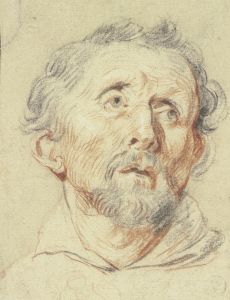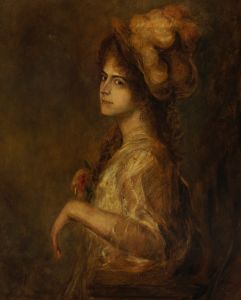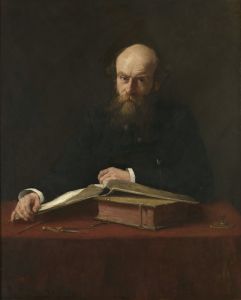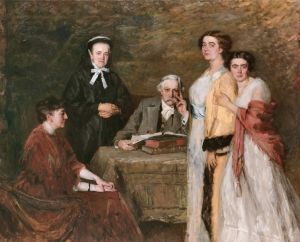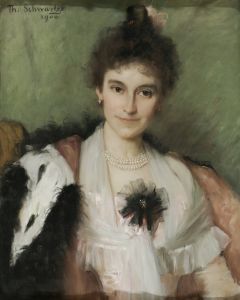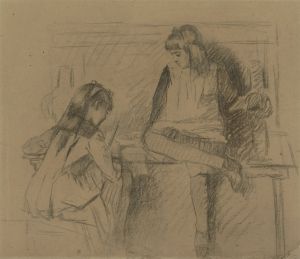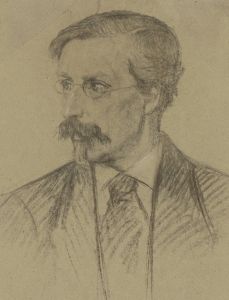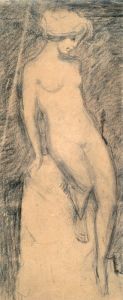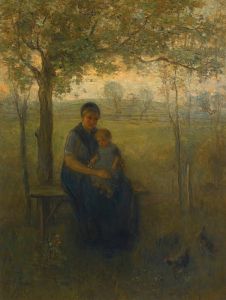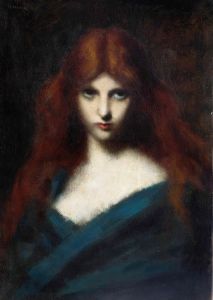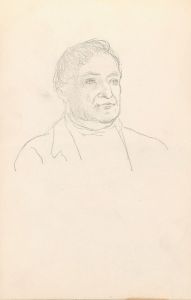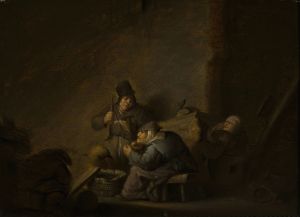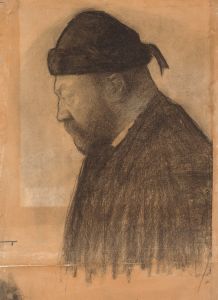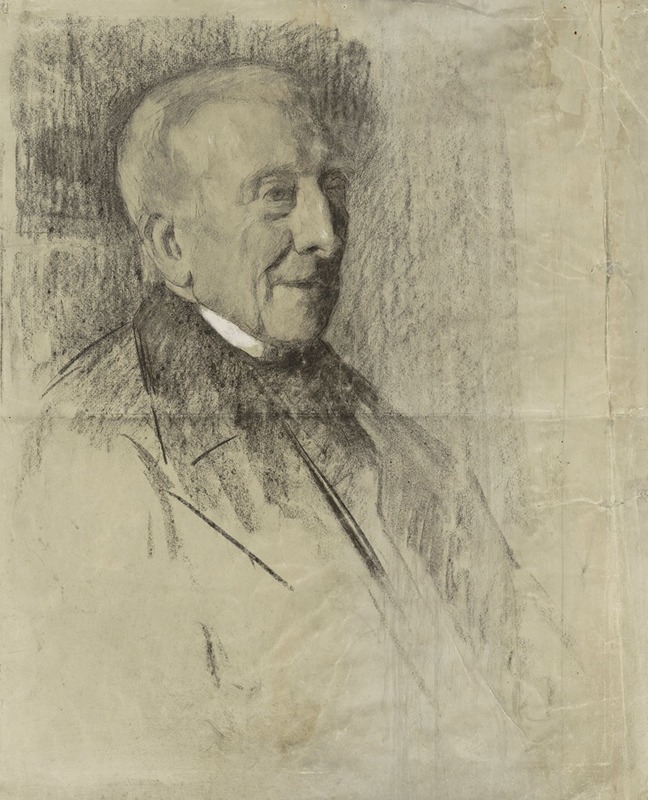
Portret van een oude heer, naar rechts
A hand-painted replica of Thérèse Schwartze’s masterpiece Portret van een oude heer, naar rechts, meticulously crafted by professional artists to capture the true essence of the original. Each piece is created with museum-quality canvas and rare mineral pigments, carefully painted by experienced artists with delicate brushstrokes and rich, layered colors to perfectly recreate the texture of the original artwork. Unlike machine-printed reproductions, this hand-painted version brings the painting to life, infused with the artist’s emotions and skill in every stroke. Whether for personal collection or home decoration, it instantly elevates the artistic atmosphere of any space.
Thérèse Schwartze was a prominent Dutch portrait painter, known for her skillful and realistic depictions of her subjects. One of her notable works is "Portret van een oude heer, naar rechts" (Portrait of an Old Gentleman, Facing Right). This painting exemplifies Schwartze's mastery in capturing the character and essence of her subjects through meticulous attention to detail and a refined technique.
Thérèse Schwartze was born on December 20, 1851, in Amsterdam, into an artistic family. Her father, Johan Georg Schwartze, was a painter, and her mother, Maria Elisabeth Therese Herrmann, was a musician. Schwartze received her initial artistic training from her father and later studied at the Rijksakademie van Beeldende Kunsten in Amsterdam. She also spent time in Munich and Paris, where she further honed her skills under the tutelage of prominent artists such as Gabriel von Max and Jean-Jacques Henner.
Schwartze's career spanned several decades, during which she gained considerable acclaim for her portraits of the Dutch elite, including members of the royal family, politicians, and wealthy bourgeoisie. Her ability to convey the personality and status of her sitters made her one of the most sought-after portraitists of her time.
"Portret van een oude heer, naar rechts" is a fine example of Schwartze's work. The painting depicts an elderly gentleman, turned slightly to the right, with a dignified and contemplative expression. Schwartze's use of light and shadow, combined with her precise brushwork, brings out the textures of the man's skin, hair, and clothing, adding depth and realism to the portrait. The background is kept simple and unobtrusive, ensuring that the viewer's attention remains focused on the subject.
The painting reflects Schwartze's ability to capture not just the physical likeness of her subjects, but also their inner character. The old gentleman's gaze, directed off to the side, suggests a moment of introspection or reflection, adding a layer of psychological depth to the portrait. This quality is a hallmark of Schwartze's work and contributes to the enduring appeal of her portraits.
Throughout her career, Thérèse Schwartze received numerous accolades and honors. She was awarded the Order of Orange-Nassau and became a member of the prestigious Arti et Amicitiae and the Pulchri Studio. Her works were exhibited widely, both in the Netherlands and internationally, and she enjoyed a reputation as one of the leading portrait painters of her era.
Schwartze's legacy continues to be celebrated today, with her paintings held in various museums and private collections. "Portret van een oude heer, naar rechts" remains a testament to her skill and artistry, capturing a moment in time with sensitivity and precision. Thérèse Schwartze passed away on December 23, 1918, but her contributions to the art of portraiture continue to be recognized and appreciated by art historians and enthusiasts alike.





